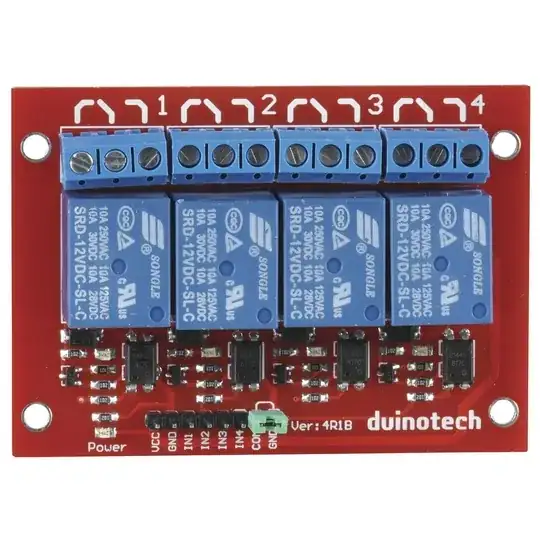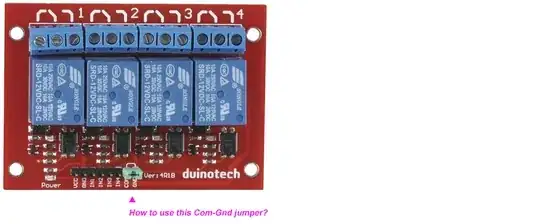I am kind of dipping my toe in this lake. Not a hardware/electronics person, more of a software guy (programmer). I am not able to easily find information about the 12V 4 Channel Relay (duinotech).
I thought this kind of relay would be so common that it would be very well documented. I am looking for a pinout and explanation of each pin. Here is an image of the component:

where would one plug the hot wire (main) and what are the other 2 why are there 2 GND pins and why is there a jumper connecting the COM to one of the GND pins.
Please point me in the direction that makes it easier for me to get this information.
Thanks
Edit:
Here is an image of the relay module that I actually have (notice how the relays themselves blue have different text on them from the previous image. Can someone explain how come this does not mention a 30VDC rating and has a duplicate line?

